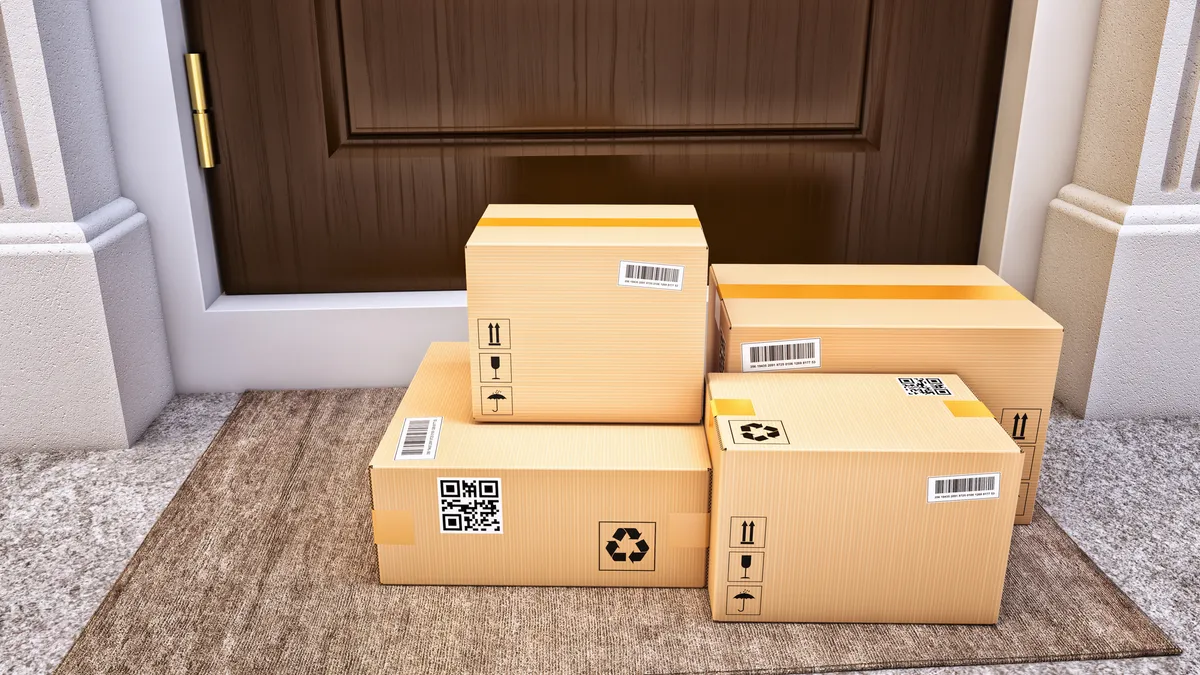As the leaves begin to fall, brands typically gear up for “peak season,” anticipating the hustle and bustle of the coming onslaught of holiday shoppers. This year, however, many likely feel more as though they are in “recovery” mode, having just completed one peak, yet realizing another one is just around the corner.
Such is the reality of the COVID-19-affected e-commerce world, where the Metapack Home Delivery Volume Index saw a 60% increase in parcel demand between March and June 2020.
While the upcoming shopping season is a bit of a mystery, one thing is certain: E-commerce will continue to reign as the shopping channel of choice. In fact, many brands might even be underestimating demand, said Ninaad Acharya, co-founder and managing partner of Fulfillment IQ, an e-commerce fulfillment consulting firm. “There is very little understanding of how much bigger the upcoming peak might be,” he said, explaining that while the spring spike was largely for essential goods, now consumers will be adding in gifts as well.
That means managing orders will be more complex than ever, given rising consumer expectations for a seamless buying journey that extends from order through fulfillment — and back again through returns.
The stakes are high: COVID-19 consumer research from Accenture found that 33% of consumers complained to a retailer about delivery while 40% of respondents from a Metapack survey said a bad online experience would turn them off from a brand.
Brands’ secret weapon? Supply chain agility. Here are three ways to maximize the post-buy-button experience to foster customer satisfaction and loyalty.
1. Diversify the partner ecosystem.
Most major carriers have announced a holiday price increase, which Acharya emphasized was not an effort to gouge consumers, but rather a tactic to avoid a logjam resulting from service-level failures across the board. “It’s almost like they are giving merchants a ‘nudge nudge’ that they might want to seek other solutions and mitigate transportation risks.”
Using multiple carriers allows shippers to balance their volume so they can better react to service issues and unexpected pricing changes, said Duncan Licence, vice president of global product at Metapack.
In addition, it allows brands to introduce new, innovative services, such as same-day shipping, that are often not available through the largest carriers. Over the last three months, Metapack has seen the acceleration of two related trends, he said. First is the rapid deployment of ship-from-store, and the second is a significant uptick in smaller regional carriers. “In some markets, we see the regionals getting a significant share of the parcel volume as shippers look for resilience and reliability,” he said.
Brands may want to consider a third-party logistics provider to outsource some or all aspects of the supply chain to instantly boost capacity. For example, a third-party provider is ideal for international deliveries because there are so many different packaging guidelines, Acharya said. “You need a resource who understands those needs and has already established local carrier relationships.”
And, Licence added, third-party logistics providers are likely to have facilities closer to customers, whether in a different state or a different country. They also can usually offer lower shipping costs by aggregating volumes from their customer base to negotiate better rates from the major carriers — savings they often pass on to the retailer.
2. Offer a dynamic promise.
Most brands assume that their customers prefer same-day or next-day shipping, but not all customers need it, especially those starting their shopping earlier in the holiday cycle. And that’s good news, considering that Acharya cautioned that two- and three-day ground delivery would not be the norm for the upcoming peak season. He said delays could stretch feasible delivery windows to five or seven days.
By offering a wider range of shipping options, brands can create customer choice, while still offering them what they value. Nearly 70% of respondents to Metapack’s fourth annual Global eCommerce Consumer Research Report said convenience was the most important factor in the delivery process. And of course, that means something different to everyone, Licence noted.
“If I am working from home, a free home-delivery option may be easiest; however, if I need the item urgently, I may look for a premium same-day delivery,” he said. Or, they find that in some markets, it’s critical to offer the choice to order online and collect from the store, while other shoppers prefer same-day delivery or eco-friendly delivery options. “Giving consumers choice at checkout, of both different delivery methods but also of delivery costs, will ensure that customers who put items into their basket will complete the sale and come back again.”
Another way to help manage shipping costs is to encourage customers to choose less costly options. “You can inform your audience about an incentive to shop early, which gives you more time to get the delivery there, or offer an additional discount if they choose five-day shipping,” Acharya noted. Brands also can spread out purchase volume by running special sales earlier in November or avoiding popular sale events, such as Black Friday or Cyber Monday, that typically see a crush of orders.
3. Optimize the post-purchase experience.
While delivery choice is a crucial part of a great customer experience, the key is to maintain transparency. “Nothing disrupts customer satisfaction like missing your promised delivery date,” Licence said, adding that nearly 70% of the consumers Metapack surveyed cited the ability to track their order as one of their top three buying considerations.
And finally, with returns a given as part of any e-commerce experience, it’s important to prioritize a frictionless process. Customers value easy returns and are loyal to brands that provide them, Licence said. In fact, Metapack’s consumer research found that nearly half of consumers had put off shopping with a retailer because of an unfavorable return policy.
Wondering how to make the upcoming peak season merry and bright? Consider implementing delivery management software from Metapack. Metapack provides the only solution that wraps all elements of the experience — delivery options, shipping, tracking and returns — into one package. Metapack technology allows frictionless access to more than 400 carriers and nearly 5,000 delivery services around the globe so that the focus can be on growing your business sustainably and meeting customers’ expectations.
Want to know more about how to successfully manage peak season 2020? Download Metapack's e-commerce Peak Season 2020 Playbook here.






